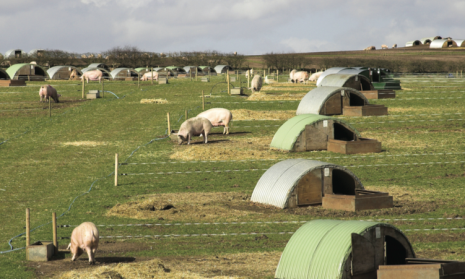Intensive (farming) Agriculture

Since people often hold quite strong views for or against what they call “intensive” farming, it is important to clarify the meanings that can be attached to the term. Agriculture uses a vast range of resources and each one can be used intensively (or not), often related to output (but not always).
Thus labour can be used intensively in terms of output per man but some- times meaning a large number of men per unit of some other resource (e.g. space or time). Capital can be used intensively in a similar way, getting high output from it or using a lot per operation.
Space is used intensively in terms of a high stocking rate of animals per ha over time (=stocking rate) or at an instant in time (= stocking density). Public concern tends to concentrate on the intensity of use of indoor space (especially for poultry and pigs) with assumptions made about the impact on animal welfare.
Individual animals can be used intensively, usually meaning obtaining high output/performance per animal per unit of time (e.g. growth rate per day or eggs per hen per year).
In this context it is worth noting that a well-fed animal is being used intensively relative to a poorly-fed one. So there are degrees of intensity as well as a great many expressions of it, related to resource use. It follows that the word “intensity” is meaningless and confusing unless accompanied by details as to the par- ticular form of intensity that is being referred to and the resource being used.
Without this specification it is quite impossible to attribute good or bad qualities and it is often the case that any particular intensity may have good consequences in one direction and poor in another.
This is well illustrated in the contrast between “outdoor” systems (animals free to move about but exposed to disease and the weather) and “indoor” systems (where movement may be restricted but animals are protected from the weather and, for example, parasites).
Download pdfFigures


